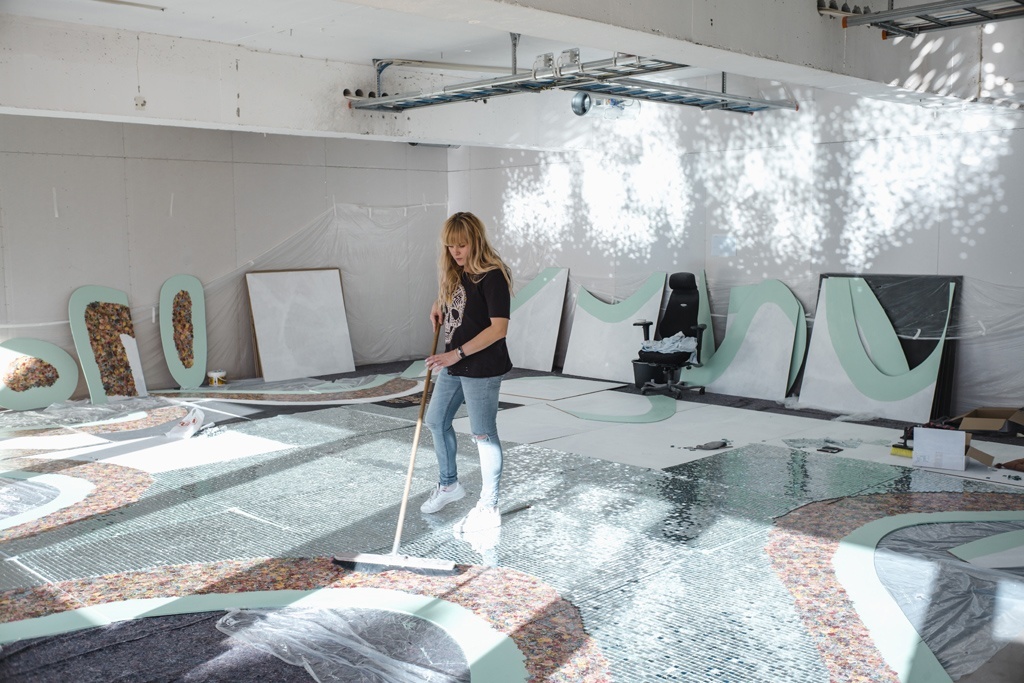Heather Jones: When we last spoke, we discussed your working process leading up to your (at the time) forthcoming exhibition at Galleri Opdahl. I would like to start from that moment if it’s ok with you. Can you describe for us the opening of your solo exhibition at Galleri Opdahl in 2014?
Elin Melberg: The opening at Galleri Opdahl was different compared to my other ones in many ways really. Many of my close friends and family were there, seeing the works for the first time, and as the hanging was very minimalistic, each piece was very direct and vulnerable and filled with the underlying content; me dealing with the recent loss of my father. I had to work with myself big time before the preview, and almost wanted to pull out. It was very challenging to talk with the press about it, as it was so personal and fragile to me, and there were a lot of topics I wanted to avoid. I managed to pull me out of my incredible nerves, but because it was so personal, it was the first time I properly questioned if what I was doing was right. Was it fair towards my mother and sister, my dad’s close friends and relatives? Did I share too much? After debating these questions, I decided it was the right thing to do. This is what I do. It would be wrong not to do it, even though I felt like I lost control of something personal and fragile for a while.
On the opening day, I had gone through all my concerns quite a few times, and I was as ready as could be. I did not want the exhibition to be like a second funeral, but I wanted to express something vulnerable, sad and fragile in a worthy way. The whole theme of the exhibition, although personal, did document a universal topic: the fragility of life and how easily a person can go from having control to losing control.
The opening was like a two hour-long performance; I had to float. With the preview being just after the removal of the Barbara Hepworth-sculpture, there was also a tense feeling in the gallery and between the different groups that visited. In other words, the space was packed with a lot of people filled with strong feelings, and the oily smell from my piece Float/Black fluid made the tension complete.
Overall, I was very happy with the exhibition and how it was received, both from my family and friends, general audience and the reviews. I am glad I went through with it. It taught me a lot, even though it was a very hard thing to do at the time.
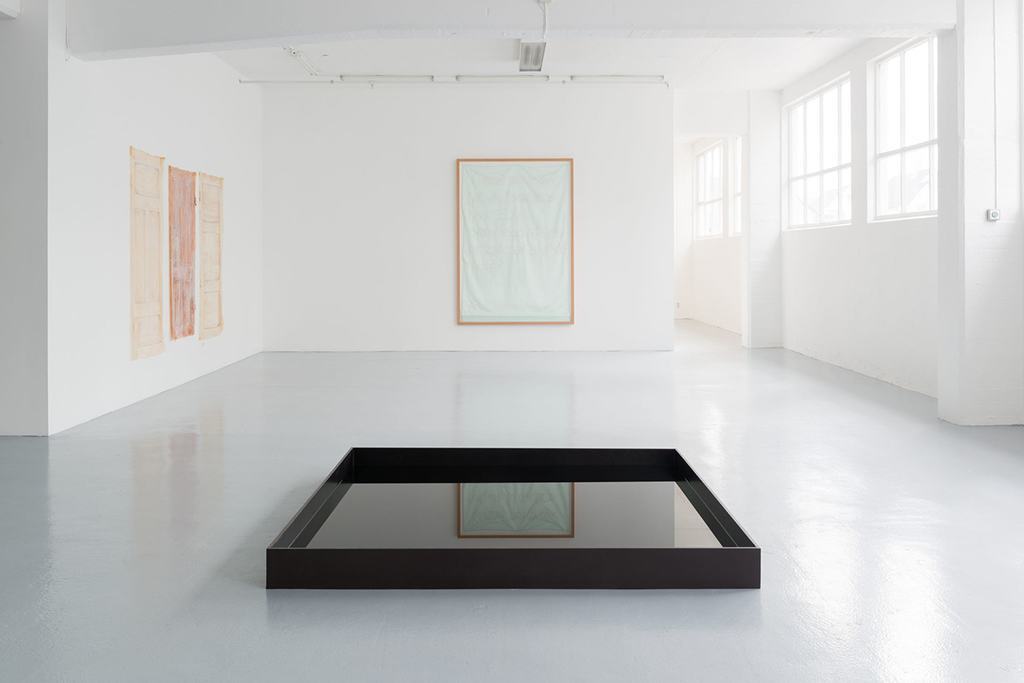
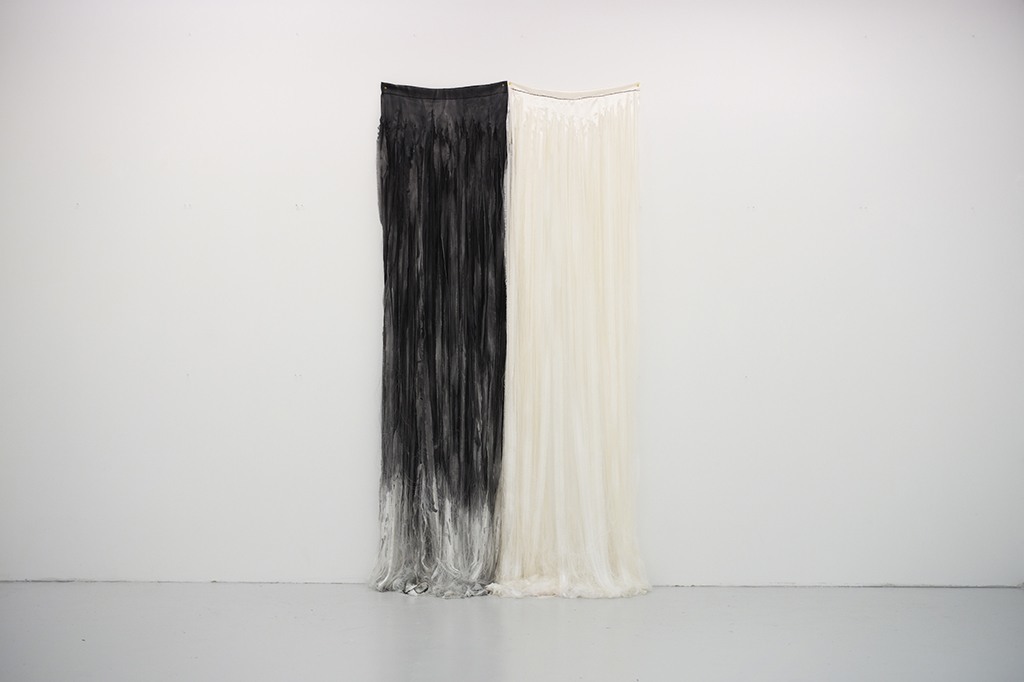
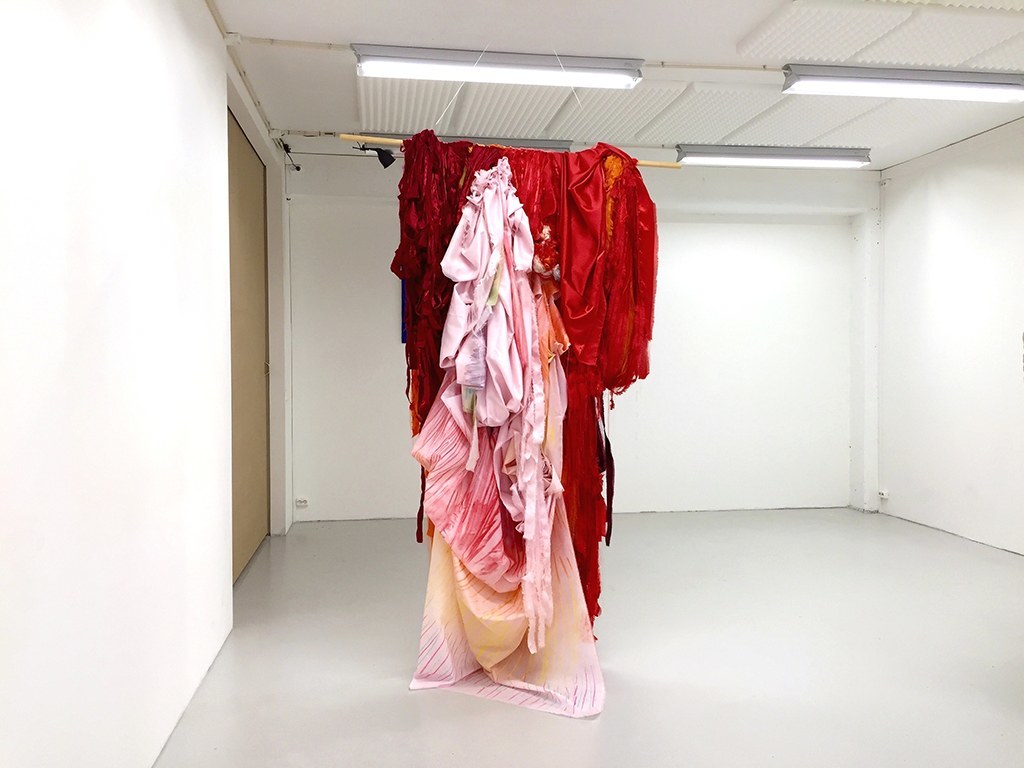
HJ: I’m glad to hear that you consider the exhibition at Galleri Opdahl a success, despite the emotional strain it must have placed on you. You mentioned fragility and vulnerability a few times – and in our earlier conversations you’ve described your previous work as more enveloping, protective, muffling, in some cases works that can you can literally walk into and close the door. Can you speak about the dramatic shift in the your work from protective (perhaps isolating) to vulnerable and open?
EM: I think it has a lot to do with the experience of illness and loss. It has changed me, and the way that I work and think of things. I’ve had to grown up in a different way, and become more independent, and in that process I have perhaps felt more vulnerable than I ever have before. I felt as if I lost a part of my protective safety-net in a way, and this was a challenging process for me, and something that felt natural to bring into my work. Before I protected myself and my process through making these closed spaces, almost protecting myself against the fear of the illness and loss, where as now I feel the need to make the work stand out on its own more openly, hopefully stronger, but still fragile.
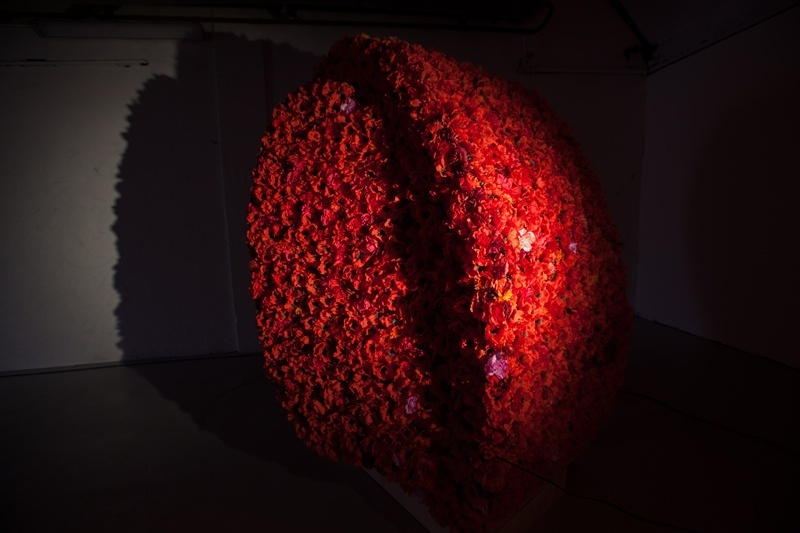
HJ: Kind of like the stages of grief? Denial into acceptance?
EM: Yes, perhaps we can read this change in those stages. I kept doing research and reading about the different stages of grief through the whole process, almost trying to be in control of what stage could or should come next. Everyone’s grieving process is individual and different, but I think it is interesting, the overall linking this change in my work to those stages; from denial and fear to acceptance and vulnerability.
HJ: In regards to making work about difficult, sensitive topics, you mentioned earlier that you came to a conclusion that “This is what I do. It would be wrong not to do it.” How do you navigate the private and public aspects of making artwork? You’ve said before that you hope your work is both personally motivated and relevant to a broader audience. Is anything “off limits” for you as an artist?
EM: This is an interesting and complicated question. I want to make work that is personal, and still universal, but not private. I know many of the pieces in Float were just there on the border of becoming private, but I think I managed to balance it, hopefully. I’m no Tracey Emin, and I don’t want to be, but still my artistic practice evolves around the personal and vulnerable existential experience, and this is something everyone can relate to, at some point, and on some level.
HJ: This is a somewhat leading question, but when you speak about the personal vs. the universal…it sounds as if you draw directly from personal experience, and then unhinge it from being directly connected to you. Do you use different methods – abstraction and perhaps even an intentional lack of forthright explanation – as a way of removing yourself somewhat, getting out of the way of the work?
EM: Yes I think so, both processes, absolutely. In order to protect myself and what is truly private, this is absolutely a way I personally solve the communication of my work in most cases. I don’t control how curators, gallerists, critics etc. write or talk about my work though, and here my experience is that they can be a lot more direct when communicating the content of my work. That’s ok, as long as I don’t have to be that direct myself, for now anyway…maybe this is something I need to work on personally though, I don’t know. I am not quite ready yet.
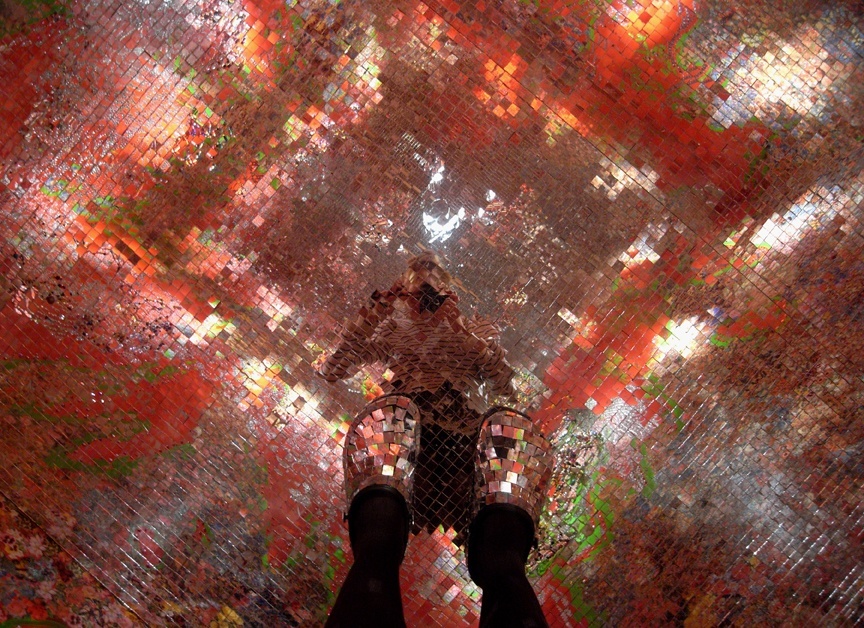
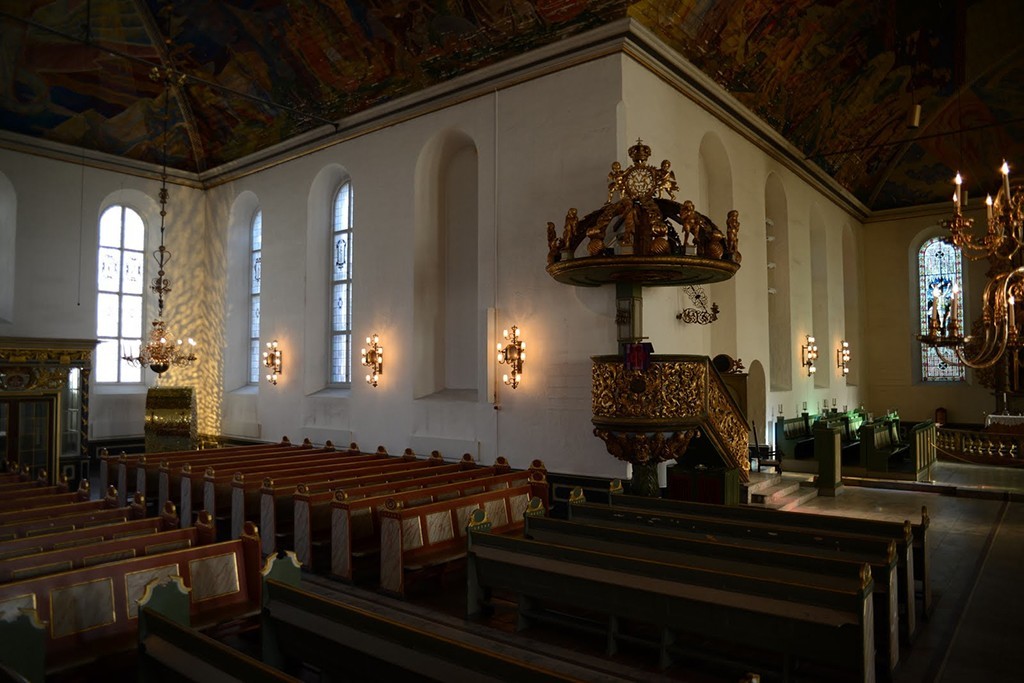
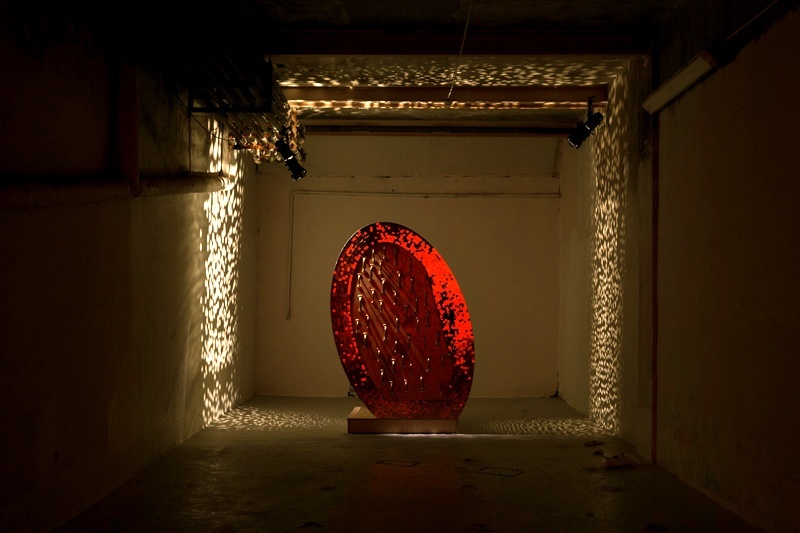
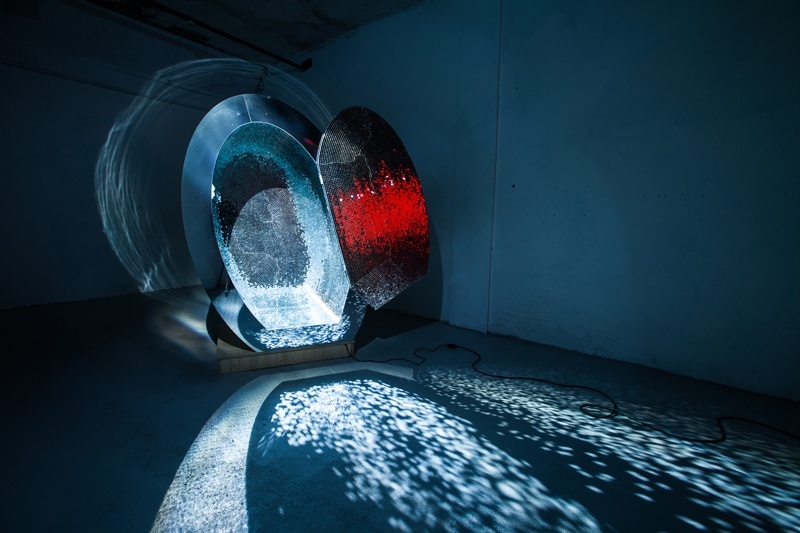
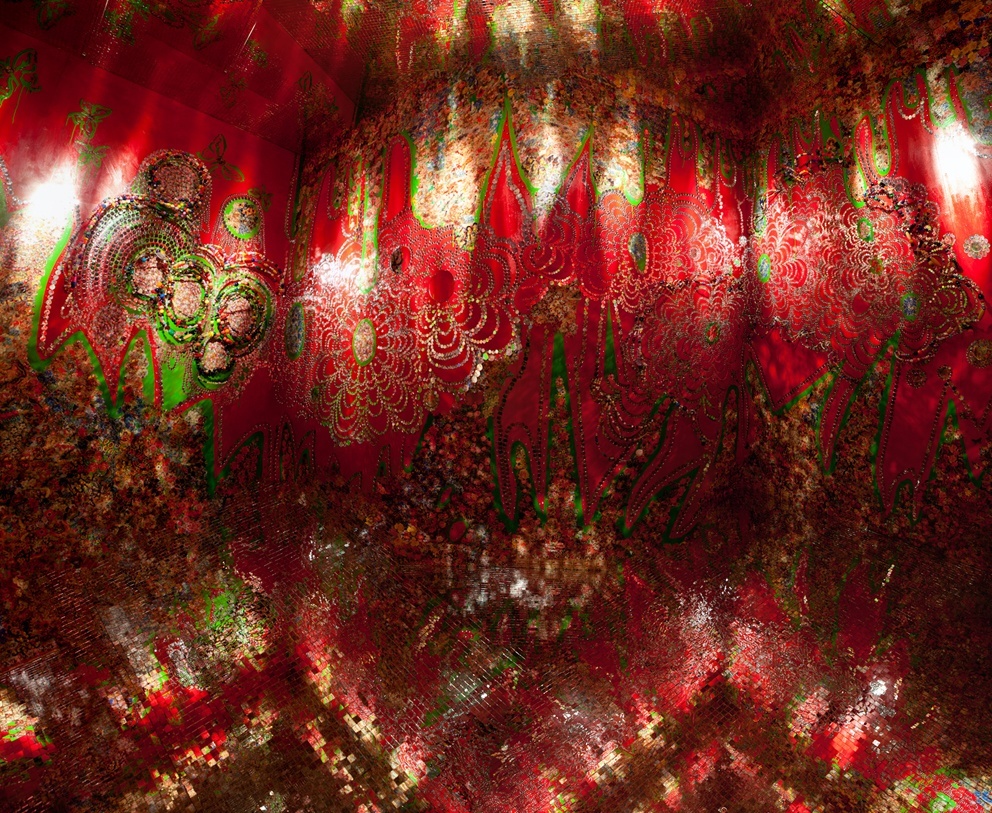
HJ: What has been your direction moving forward from this exhibition? Have you noticed a change in trajectory or working method in the last year?
EM: Since the exhibition at Galleri Opdahl, my work has changed. Or, the change started with the work leading up to that exhibition, as we spoke about at that time. I have continued to work with a lot of textile pieces, embroidery and labor-intensive processes. I still bring a lot of inherited materials into my work, but in a different way then earlier. I have inherited a huge amount of different textiles and yarn from my grandmother for instance, and I am bringing them into new large-scale textile pieces. My grandmother worked a lot with textiles, and her dream in the 1940s was to study at Industriskolen, but she was not permitted. Instead she studied sewings and weaving at Husfliden locally for a year, continuing what was expected at the time; using textiles in a sensible and useful way, not freely, although that was her dream. During the later years, as an older woman, she could finally be creative in a different way. Making these textile pieces with her yarn now, feels good, and it feels like I am continuing her dream in a way – giving her materials the creative or artistic value that she perhaps wanted to express herself. It gives my working process more value and it feels right.
The Float exhibition was special, and I had to think of how and what I should keep working on after that, and what I should leave behind in a way. My work still evolves around the fragility of life, heritage and the staying in control/losing control, as this is an aspect I have been researching for many years – but in a less concrete way, compared to the exhibition at Opdahl. I focus on exploring different qualities within different materials and distorting the materials; making them fragile or turning them into something new. I have also started working with hands-on dry pastel drawings, as a nice little spontaneous contrast to the forever ongoing and detailed pieces I normally dive into.
I am working on a 135m2 big public commissioned piece for Tokerud skole and Oslo Municipality, where I glue one and one tiny bit of mirror mosaic. Basically it is 1.1 tons of mirror bits, glued individually. It is a very long process, but I love the challenge.
HJ: Very exciting to hear about your work moving on from the exhibition at Opdahl. Can you describe what attracts you about labor intensives processes – the stitching, the gluing of small mosaic pieces individually, etc – and why you choose not to outsource the labor, as many artists choose to do?
EM: I love a challenge, that’s one part of it. Also, it is part of the content of my work. I explore the line between having control and losing control, and through these long processes, I get to challenge both how much the materials can take before they burst or fray and how much I can take of the process. This is very interesting to me. It is also about the presence in the process; I am here now, gluing or stitching. I am present in every bit. I like that. Also, it feels so good when I finish and see the result wherever it is hung or mounted. At some point it might be interesting to see how I would feel to outsource a project, as an experiment; try to let go of the need to control on this level, and see how that makes me feel.
I do have assistants working for me on some of my major public art projects, and this is very helpful, but it is still me gluing all the mirrors.
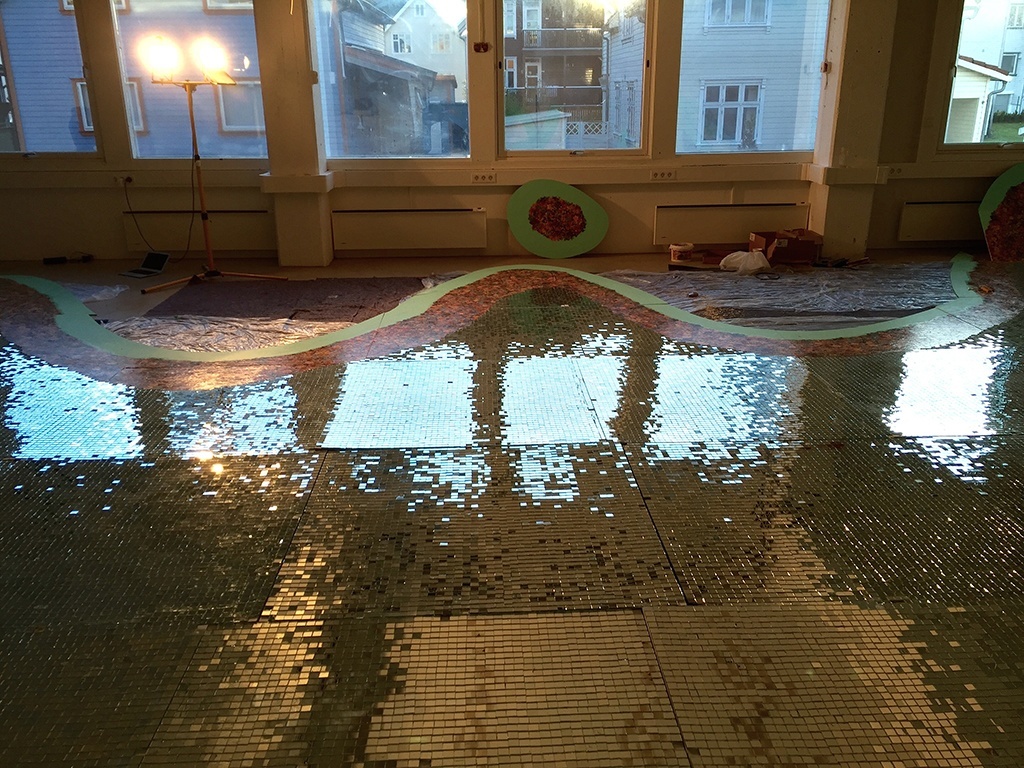
HJ: Can you speak a bit more about your relationship to inherited or passed-down materials, like your father’s shirts and your grandmother’s yarn? Is there any kind of spiritual aspect to using these materials, and would you consider your pieces to hold the same “truth” if the materials were from an impersonal source?
EM: While as all the mosaic is imported, I have always also searched vintage shops internationally for the right object, with the intention of using them for art projects. I think my interest also evolves around used objects that have a long history; they have been important to someone on some level at some point, and now I am allowed to turn them into objects or pieces of art. This is an interesting aspect, and I intend to combine new materials, vintage treasures and more personal inherited objects in my work, with the long working process as a common denominator.
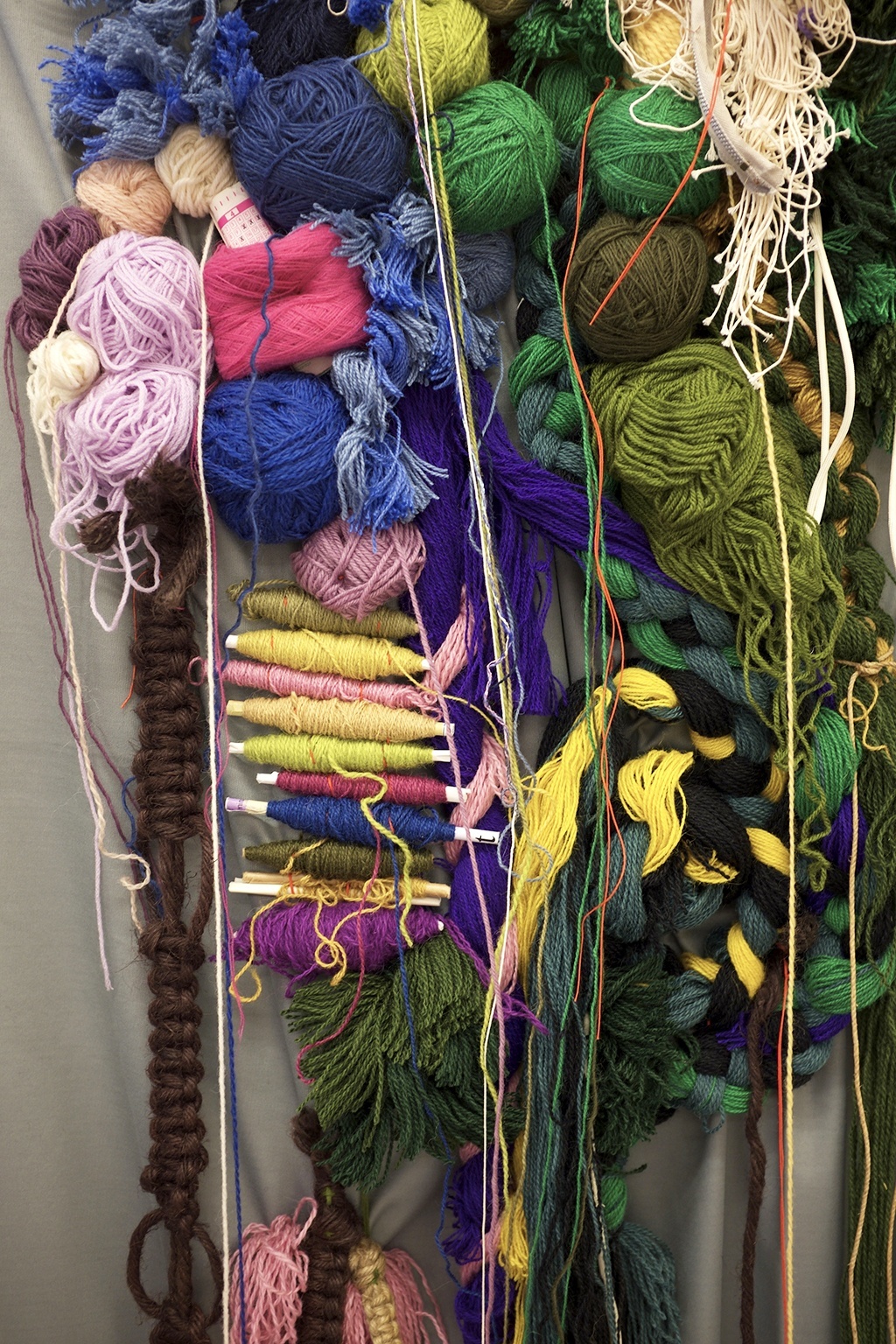
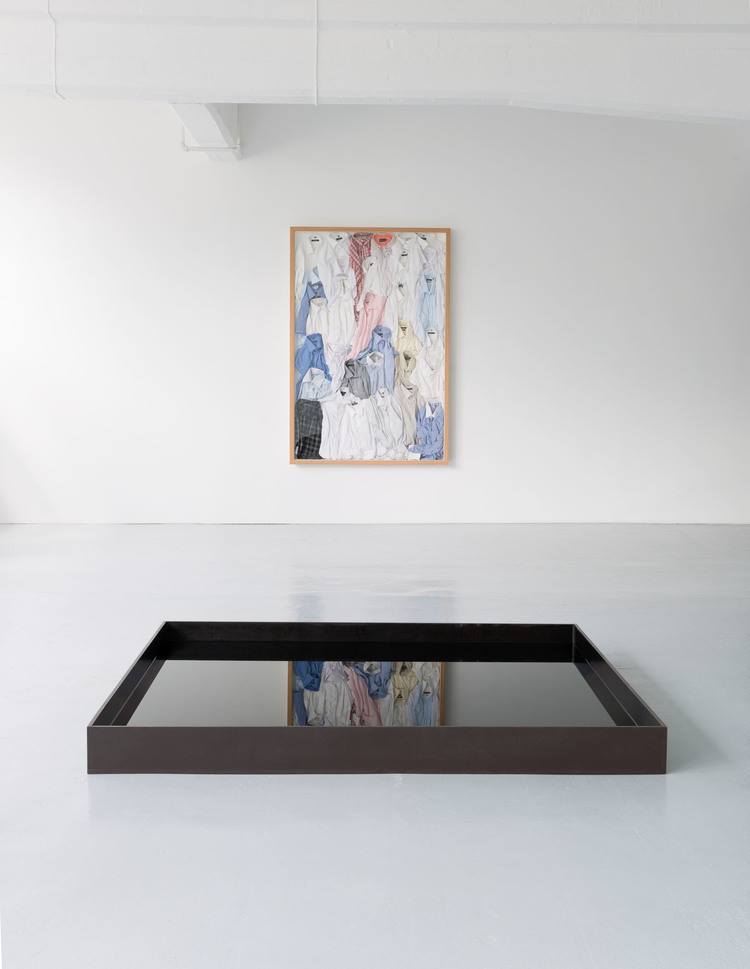
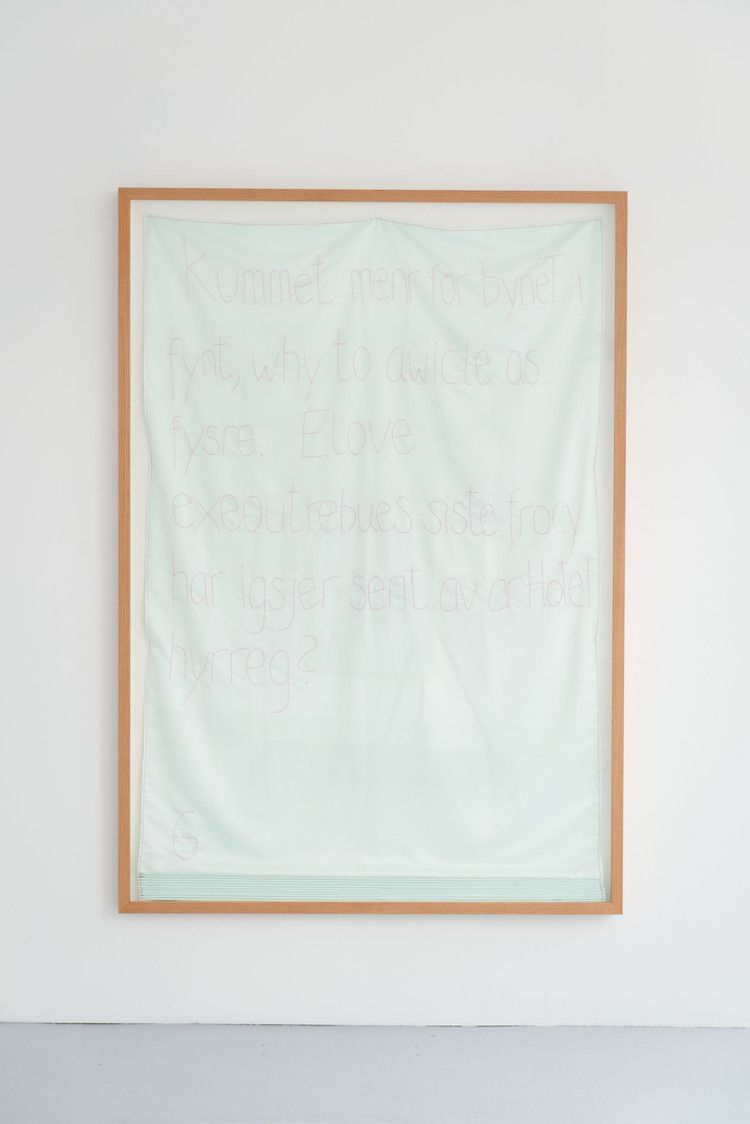
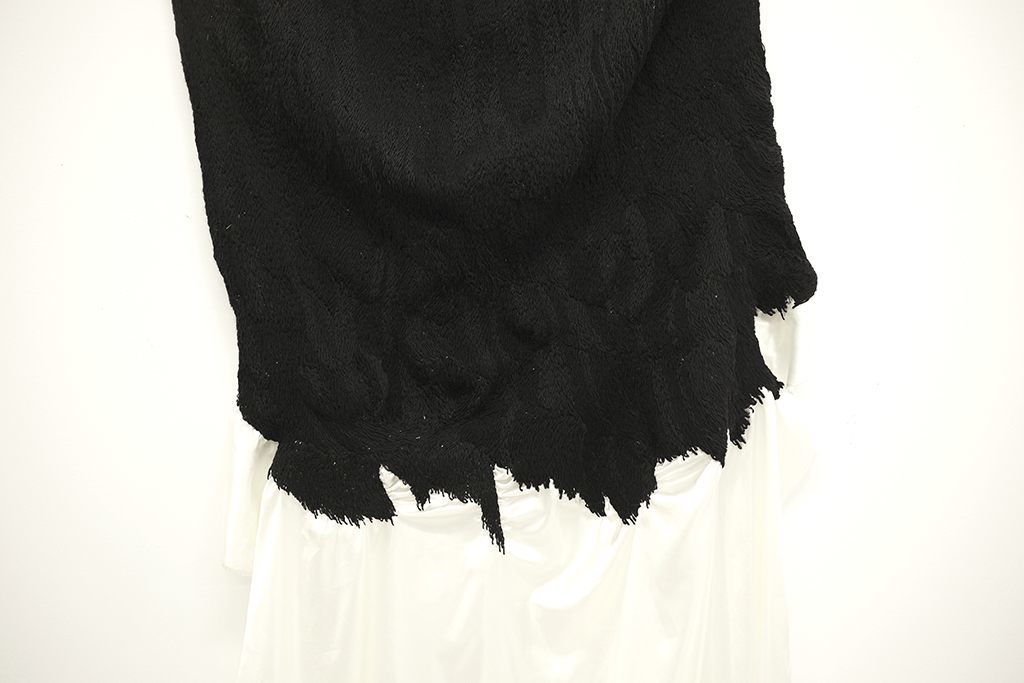
HJ: I want to touch again on this idea you mentioned briefly of “leaving behind” certain ideas or ways of working. This is an interesting point as so many mid-career artists struggle with being branded a certain way. How do you as an artist deal with decisions about what to leave behind, and what practices remain relevant moving forward?
EM: This can feel quite complicated, and I think you have to be a bit clever about it. Moving into a new direction, but still keeping on some parts. You feel the need to change, but you cant do it too dramatically, as it might look weird and feel unnatural. The way I see it, the most important thing is that I remain honest with myself and my processes, and that I do what I do because it is my decision.
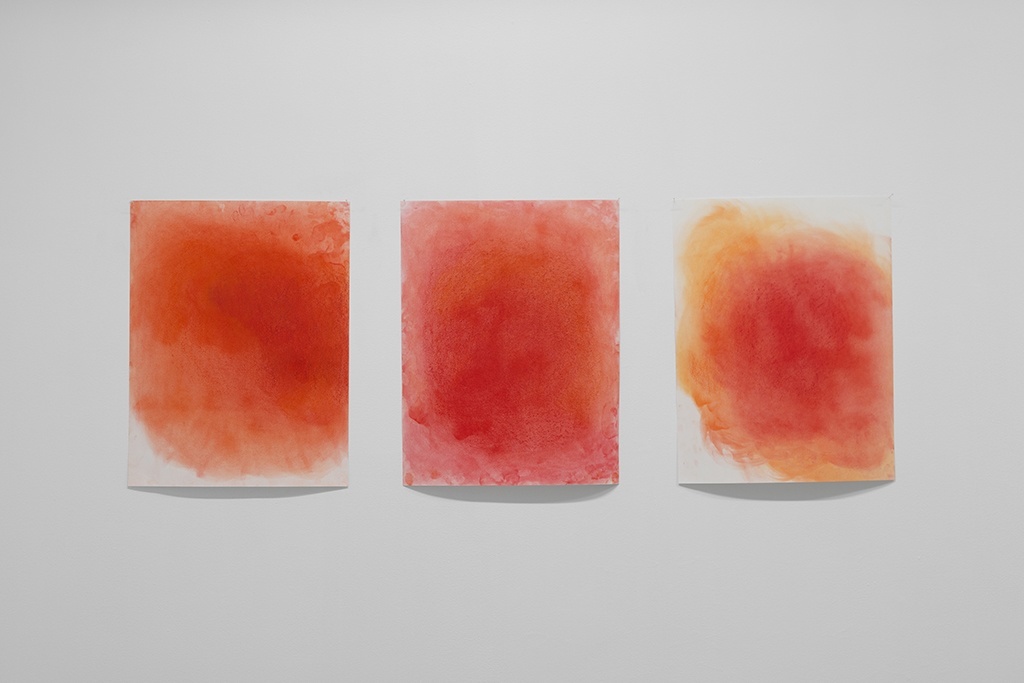
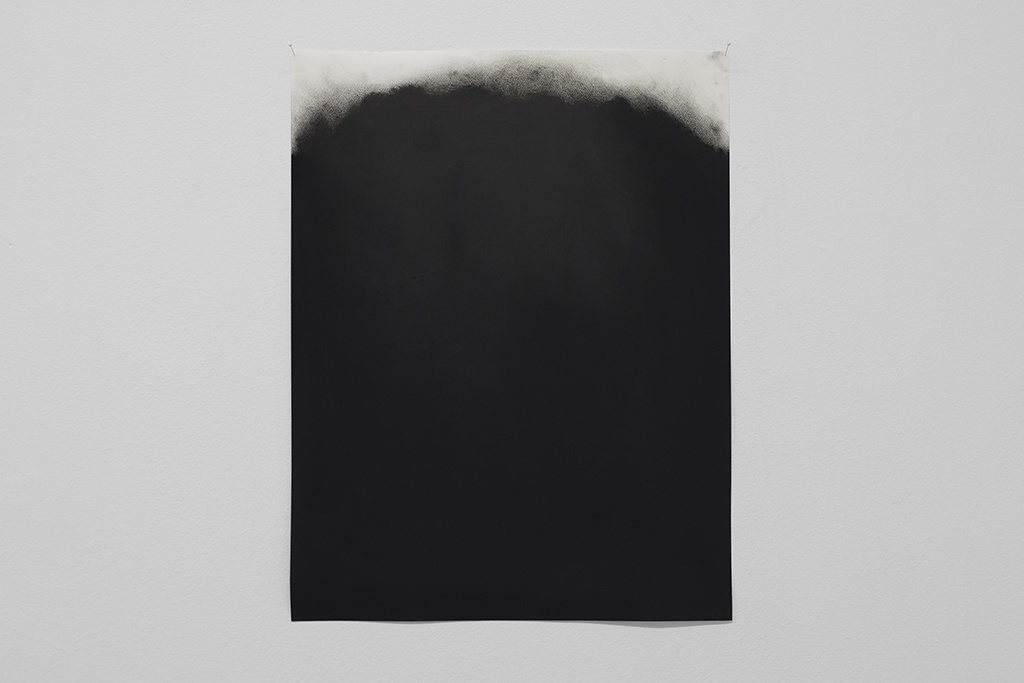
HJ: You were recently nominated for the Conte a Paris Drawing Prize. Could you tell us a bit more about that?
EM: I was nominated for the Conte a Paris Drawing Prize in London this summer for one of my dry pastel drawings, but I didn’t win it. My work was selected for the exhibition at Griffin Gallery by a nice jury though; Chief Executive of the Saatchi Gallery Nigel Hurst, former shortlisted Turner Prize artist Ian Davenport and the Director of Griffin Gallery, Becca Pelly-Fry.
HJ: Can you tell us about any upcoming exhibitions or projects that you’re currently working on?
EM: Right now, a lot of my time is going into the preparation of Prosjektrom Normanns’ participation at Untitled Art Fair at Miami Beach in beginning of December. Margrethe Aanestad, Kristin Velle – George and I will travel to Miami very soon. Curator and writer Ian Cofre will fly down from New York to work with us at the booth, and Miami-based artist Leyden Casanova-Rodriguez is doing a special sculptural construction for us on site. We are also bringing work by Norwegian artists Lars Morell and Ane Graff, which I am quite excited about.
The 135m2 wall piece for Oslo Municipality is a massive ongoing project as well. I will work on this until spring 2016, when it will be transported to Oslo for the mounting process. The mounting of the work will be very interesting as it involves more than 70 heavy, big and fragile surfaces covered by mirrors and a mounting height of 15 meters. I will be exploring the being in control, losing control aspect there in other words.
In addition to this, I am about to start working on a new major installation project that will be exhibited at Galleri Sølvberget autumn 2016 in cooperation Schizophrenia Days Conference Stavanger University Hospital. The mosaic bits for this are even smaller; 0,5 x 0,5mm and 1x1mm, and in colour. It will be interesting to continue with large scale mosaic in a new way, and I am also pleased with doing a project at the newly re-opened Galleri Sølvberget.
In February of 2016 Margrethe Aanestad, Kristin Velle-George and I will be developing a site-specific exhibition at Open Source Gallery in Brooklyn, New York. This will be a completely different process, where I see myself working more freely on site, and including more soft textile pieces.
I am also looking forward to my curatorial projects at Prosjektrom Normanns next year!


